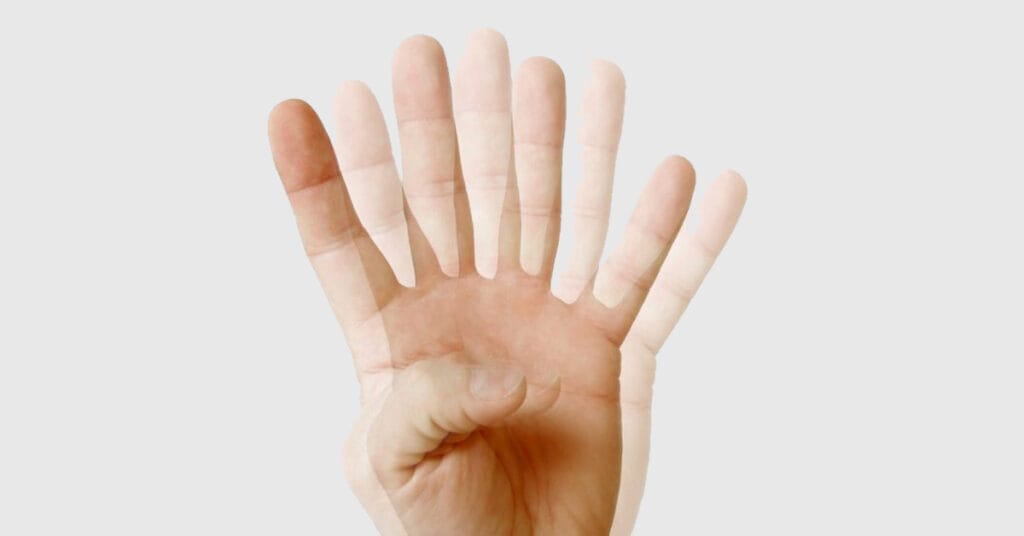Weak eyesight is a common concern that affects people of all ages. While it is normal for vision to change over time but certain symptoms can indicate underlying issues that require immediate attention. Ignoring these signs may lead to further complications impacting your quality of life. In this article, we will discuss the symptoms of weak eyesight you should not ignore, helping you recognize when to seek professional advice.
Understanding Weak Eyesight
Weak eyesight refers to a decline in visual clarity, making it harder to see objects clearly. It can happen for many reasons, such as genetic factors, aging, spending too much time in front of screens, or not taking proper care of your eyes. While some vision changes are natural with age, many symptoms of weak eyesight can be managed or treated if identified early.
Common Symptoms of Weak Eyesight
Let’s explore the most common signs of weak eyesight you should not ignore, why they happen, and what you can do about them.
1. Blurred Vision
Blurred vision is one of the most noticeable symptoms of weak eyesight. It makes it difficult to focus on objects, whether they are close or far away. Common causes of blurred vision include:
- Refractive errors: These include nearsightedness (myopia), farsightedness (hyperopia), and astigmatism.
- Eye strain: Spending long hours looking at screens or reading without taking breaks can tire your eyes and cause blurry vision.
- Serious conditions: Issues like cataracts or macular degeneration can also cause blurred vision.
For example, if you find it hard to read street signs while driving or struggle to read small print in books it might be a sign of weak eyesight that requires attention.
2. Frequent Headaches

Frequent headaches, particularly around your forehead and eyes, can indicate weak eyesight. These headaches are often caused by:
- Uncorrected vision problems: When your eyes have to work harder than usual to focus, they can strain and cause discomfort.
- Digital eye strain: Spending hours on a computer, phone, or tablet without proper breaks can lead to headaches.
If you notice that your headaches occur after reading, watching TV or working on a computer, you should get your eyesight checked. It’s a sign of weak eyesight you should not ignore.
3. Trouble Seeing at Night (Night Blindness)

Night blindness or difficulty seeing in dim light is another symptom of weak eyesight. You may find it hard to see when driving at night or walking in poorly lit areas. This can be caused by:
- Vitamin A deficiency: This vitamin is important for good vision, especially in low-light conditions.
- Cataracts: A cloudy lens can make it harder to see in dim light.
- Retinitis pigmentosa: A rare genetic disorder which affects night vision.
For instance, if you find it increasingly difficult to see while driving at night or walking in a dimly lit room, it’s a clear sign to consult an eye doctor. Symptoms of weak eyesight like these should not be ignored.
4. Double Vision

Double vision, also called diplopia, is when you see two images of a single object. This symptom can happen occasionally or persistently. Common reasons for double vision include:
- Eye muscle problems: Such as misalignment of the eyes (strabismus).
- Corneal issues: Like keratoconus, which affects the shape of the cornea.
- Neurological problems: Conditions such as stroke, brain injury or multiple sclerosis can also cause double vision.
If you experience persistent double vision, it’s essential to seek medical attention promptly, as it could signal a serious condition and worsen weak eyesight.
5. Sensitivity to Light

Sensitivity to light or photophobia may be a symptom of weak eyesight. Bright lights may make you feel uncomfortable or even cause pain. This symptom might be due to:
- Eye strain: Spending a lot of time in front of screens or in poorly lit environments.
- Eye conditions: Such as migraines, uveitis, or corneal abrasion.
For example, if sunlight or bright indoor lighting causes discomfort regularly, it’s a good idea to consult an eye specialist. Ignoring sensitivity to light can worsen weak eyesight over time.
6. Squinting Frequently
Squinting helps in reducing the amount of light entering your eyes making it easier to focus. However, if you notice yourself squinting frequently, it could indicate:
- Refractive errors: Conditions like nearsightedness or farsightedness.
- Uncorrected vision problems: Your eyes may be straining to see clearly.
For instance, if you find yourself squinting to read a book or look at something in the distance it is a clear sign of weak eyesight.
7. Eye Fatigue and Dryness
Eye fatigue and dryness are common symptoms of weak eyesight, especially in today’s digital age. They often occur due to:
- Prolonged screen time: Without regular breaks, your eyes can become strained and dry.
- Inadequate lighting: Poor lighting conditions will make it harder for your eyes to focus.
- Aging: As you get older, your eyes produce fewer tears leading to dryness.
Symptoms of eye fatigue include a burning sensation, redness, or a feeling that something is in your eye. Following the 20-20-20 rule (looking at something 20 feet away for 20 seconds for every 20 minutes) and using artificial tears can help alleviate these issues.
8. Difficulty Reading or Recognizing Faces

If you struggle to read small print or recognize faces from a distance, it’s another symptom of weak eyesight. This difficulty is often due to:
- Presbyopia: A common age-related condition that makes it harder to see up close.
- Refractive errors: Such as nearsightedness or farsightedness.
For example, if you can no longer read menus in dimly lit restaurants or recognize friends from across a room, you might need glasses or contact lenses. Such symptoms of weak eyesight should prompt a visit to an eye specialist.
9. Seeing Halos Around Lights
Seeing halos or bright rings around lights, especially at night, is a symptom of weak eyesight. This can be caused by:
- Cataracts: Which scatter light entering the eye.
- Corneal swelling: Often caused by overusing contact lenses or certain eye infections.
If you frequently notice halos, particularly while driving at night, you should seek professional advice. Symptoms of weak eyesight like halos can worsen if untreated.
Frequent eye infections can sometimes be a sign of underlying health conditions, including fungal infections. For more details on rare fungal infections like yellow fungus, check out our article Yellow Fungus Symptoms.
10. Repeated Eye Infections
Frequent eye infections, such as conjunctivitis, can indicate poor eye health or hygiene. Causes may include:
- Unclean contact lenses: Not cleaning lenses properly or using them for too long.
- Allergies: That irritates the eyes and leads to infections.
Maintaining proper hygiene and consulting an eye doctor for recurrent infections is crucial to prevent further damage. Repeated infections can also signal weak eyesight.
11. Changes in Peripheral Vision
Peripheral vision is what you see at the edges of your field of view. A decrease in peripheral vision, or tunnel vision, is a serious symptom of weak eyesight. It can be caused by:
- Glaucoma: A condition that damages the optic nerve.
- Retinal detachment: A medical emergency that requires immediate treatment.
For instance, if you find it hard to notice objects or people beside you while walking or driving, it’s a sign to get your eyes checked right away. Changes in peripheral vision are significant symptoms of weak eyesight you should not ignore.
Tips to Prevent Weak Eyesight
While some causes of weak eyesight are unavoidable, adopting good habits can reduce the risk of vision problems. Here are some tips:
- Get regular eye exams: Visit an eye doctor every year or as recommended, especially if you have a family history of eye problems.
- Eat a healthy diet: incorporate foods rich in vitamins A, C, and E, and also omega-3 fatty acids.
- Limit screen time: Follow the 20-20-20 rule to reduce digital eye strain.
- Use proper lighting: Ensure your workspace and home have adequate lighting.
- Protect your eyes: Wear sunglasses to protect your eyes from harmful UV rays and protective eyewear in hazardous environments.
When to See an Eye Doctor
If you experience any of the symptoms of weak eyesight you should not ignore, don’t wait to seek professional help. Early detection and treatment can prevent vision problems from worsening and help maintain your quality of life.
Final Thoughts
Weak eyesight can affect your ability to perform daily tasks such as reading, driving and working. Recognizing the symptoms of weak eyesight you should not ignore can help you take action early. Whether it’s regular check-ups, a healthy lifestyle, or corrective lenses, taking care of your eyes ensures they stay healthy for years to come. Prioritize your vision—it’s one of your most important senses.
Frequently Asked Questions
1. How do you know if your eyesight is weak?
Weak eyesight is often indicated by symptoms like blurry vision, difficulty reading small text, squinting, or experiencing frequent headaches and eye strain, especially in dim lighting.
2. Can I recover my weak eyesight?
Some vision problems can be corrected with glasses, contacts, or surgery, but others, like age-related conditions, may not fully recover. However, maintaining eye health through nutrition and lifestyle choices can prevent further decline.
3. What are the symptoms of low vision?
Low vision is characterized by difficulty reading, recognizing faces, or seeing things at a distance, even with glasses. It affects daily tasks like driving and reading, making it harder to live independently.
4. How can I check my weak eyesight at home?
You can check your eyesight at home by using an eye chart to test your vision clarity. If you notice blurriness or difficulty focusing on objects at different distances, it’s advisable to seek professional evaluation.
5. How to improve vision in 7 days?
While significant improvement in just 7 days isn’t possible, you can start supporting your eye health by consuming nutritious foods, taking breaks from screens, doing eye exercises, and protecting your eyes from harsh light.
Images By: FreePik




